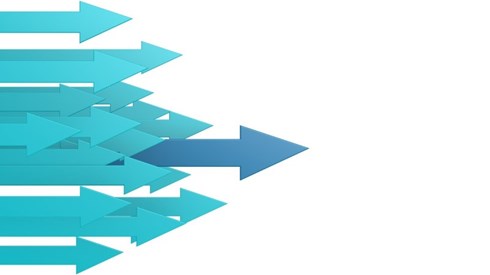Benchmarking Report Finds Captive Growth Across Lines, Regions

July 12, 2023

Captive insurance growth continues across all lines of business and all regions, according to the latest captive benchmarking report from Marsh Captive Solutions.
"By various measures, the use of captive insurers is growing across the board," Marsh says. "As risk-funding vehicles that offer numerous advantages, interest in using captives is higher than ever."
As reported in 2023 Captive Landscape: Emerging Trends in the Captive Insurance World (July 3, 2023), Marsh found that captive premium growth continued over the last 2 years in all regions, with even mature captive markets such as Europe and the island domiciles seeing growth.
Premiums written by captives owned by North American-based parents increased 15 percent over the period, Marsh says, while premiums in the major island domiciles of Bermuda, the Cayman Islands, and Barbados saw premiums grow 11 percent.
Meanwhile, captive premiums in Guernsey and Luxembourg increased 13 percent and 36 percent, respectively, Marsh says. UK captive premiums increased 8 percent, while captives with Asia-based parents wrote 58 percent more premium. Premiums written by captive insurance companies with Latin America-based parents increased 36 percent over the period.
"Historically, captive growth has occurred during periods of rising commercial insurance pricing as buyers retain more risk," Marsh says. "However, even as rate increases began to slow for certain lines of business and regions, captives continued to grow—a trend Marsh foresees continuing."
In terms of its captive business, over the past 3 years Marsh clients formed nearly 400 new captive entities across 55 domiciles, the report says, with the premium volume of Marsh-managed captive insurance companies topping $70 billion, while those captives have nearly $120 billion in surplus.
Among its captive clients, traditional property and casualty coverages account for the largest amount of premium at 36 percent, Marsh says. Other coverages written in Marsh-managed captives include life insurance, 30 percent; employee benefits, 19 percent; and financial lines, 15 percent.
Marsh says it's also seeing interest in nontraditional lines of coverage continuing to grow. Among employee benefits lines, medical stop-loss premiums in captives were up 32 percent, Marsh says, while premiums for voluntary benefits increased 39 percent. On the casualty front, directors and officers (D&O) liability premiums increased 100 percent. And cyber-insurance premiums increased 57 percent, with the number of Marsh-managed captives writing cyber insurance increasing 75 percent.
"During the hard property market of recent years, Marsh captives have experienced a 7 percent premium increase just in North America," the report says. "Fronted reinsurance, quota shares, excess, and captives have been participating in property layers in new ways."
Casualty insurance coverages, which Marsh notes have long been "a backbone of captives," have also been evolving, according to the report. "Many captive owners want to know how to become smarter about what they are financing," Marsh says. "There has been a lot of growth in the casualty space, with workers compensation remaining the biggest segment."
The challenging traditional insurance market has led some captive insurance companies to seek new approaches to improve their results, Marsh says. That's led to such things as tie-ins to employee benefits, collaboration with human resources, and growth and expansion of captives' footprints.
Marsh notes that while third-party business had historically made up only a small portion of captive insurance premium, it now represents 27 percent of Marsh-managed captives' premium.
"More captive owners are interested in capturing underwriting profit and investment income on cash flow associated with insuring third-party risks," Marsh says. "In addition to diversifying the captive's risk portfolio, third-party coverages—such as pet insurance, umbrella liability, automobile, and extended warranties—can enhance a captive's profitability."
An additional potential benefit of putting such diverse risks into a captive is that doing so helps spread volatility across multiple lines of coverage, lowering volatility in the captive, Marsh says.
Insuring third-party risks through a captive also creates risk distribution, Marsh says, which supports tax-deductibility of captive premiums for the parent company.
Marsh says that protected cell captives are one of the fastest-growing forms of captive insurance. While the names of the vehicles—often referred to as "rent-a-captives"—might vary from domicile to domicile as protected cell companies, segregated portfolio companies, segregated account companies, or incorporated cell companies, their structures are similar in that each cell is individually capitalized and separated from other cells, Marsh notes.
Protected cell captives represent 25 percent of the new formations for Marsh Captive Solutions in the United States and globally, the report says. Marsh notes that protected cell captives can offer several advantages.
- Up to 50 percent lower operating costs than those for a single-parent captive
- A set-up time as short as a few days instead of months
- The established infrastructure of service providers
- The potential to realize the same financial advantages as with a single-parent captive
Looking at captive trends across several industry sectors, Marsh says that financial institutions (FIs) represent 52 percent of Marsh-managed captive premiums and 32 percent of captive premium growth. "With the growing sophistication in risk financing techniques, the FI industry continues to be far and away the largest user of captives, across all industries," Marsh says.
Communications, media, and technology companies represented 7 percent of Marsh-managed captives' premium growth, according to the report, with increasing captive use for cyber insurance, D&O, errors and omissions, and medical stop-loss.
Retailers and wholesalers represented 7 percent of Marsh's captive premiums and 52 percent of premium growth, the report says. Auto liability; cyber insurance; property—nuclear, biological, chemical, radiological; and property—terrorism through the US Terrorism Risk Insurance Act (TRIA) are emerging growth areas for retailers' and wholesalers' captives, Marsh says.
The global automotive industry represents 4 percent of Marsh-managed captive premiums and 22 percent of captive premium growth, with employee benefits, cargo, property, and supply chain coverages becoming increasingly important elements of automotive captive programs.
The transportation industry is responsible for 2 percent of Marsh-managed captive premiums and experienced 40 percent growth. Excess liability, marine and cargo, property TRIA, and workers compensation are the leading growth areas for transportation industry captive premiums, the report says.
July 12, 2023




